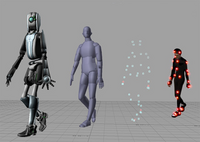
Photo from wikipedia
Abstract Academically-contingent self-worth is commonly viewed as unidimensional, capturing how much students' self-worth links to positive and negative academic outcomes. Recent evidence, however, suggests a bi-dimensional structure whereby positive contingencies… Click to show full abstract
Abstract Academically-contingent self-worth is commonly viewed as unidimensional, capturing how much students' self-worth links to positive and negative academic outcomes. Recent evidence, however, suggests a bi-dimensional structure whereby positive contingencies and negative contingencies are separate. This bi-dimensional model ignores common variance between positive- and negative- contingency items. Therefore, in the current research, we compared the unidimensional model and bidimensional model to several bifactor models. Across three samples, the best candidate was the bifactor model with a general-contingency factor and a separate and unique positive-contingency factor. These two factors were differentially related to self-esteem, neuroticism, and learning goals. The identified model may provide theoretical clarity, resolve inconsistencies, and generate new hypotheses.
Journal Title: Personality and Individual Differences
Year Published: 2021
Link to full text (if available)
Share on Social Media: Sign Up to like & get
recommendations!